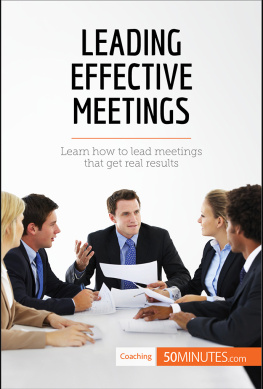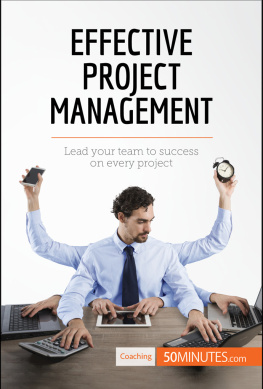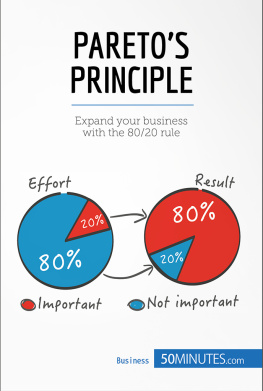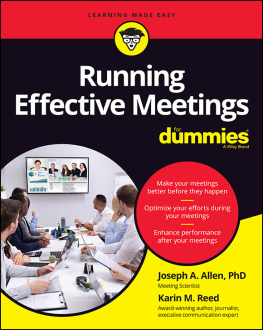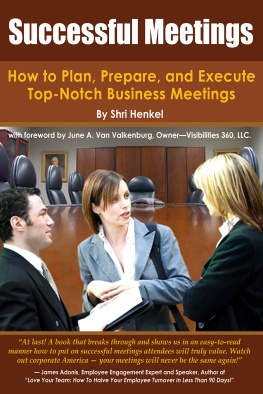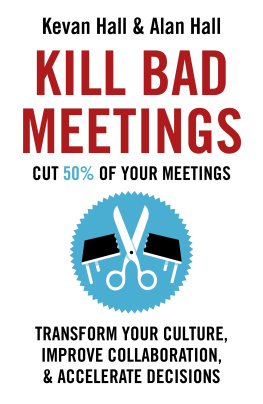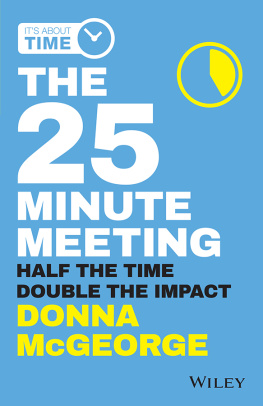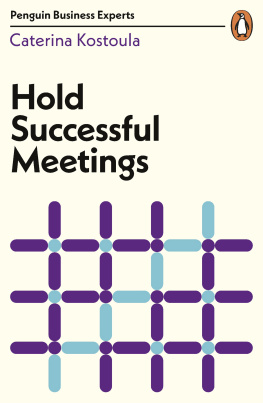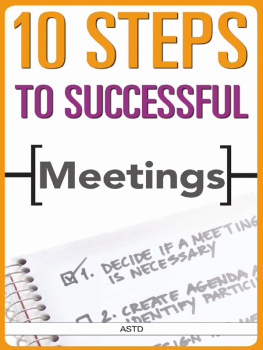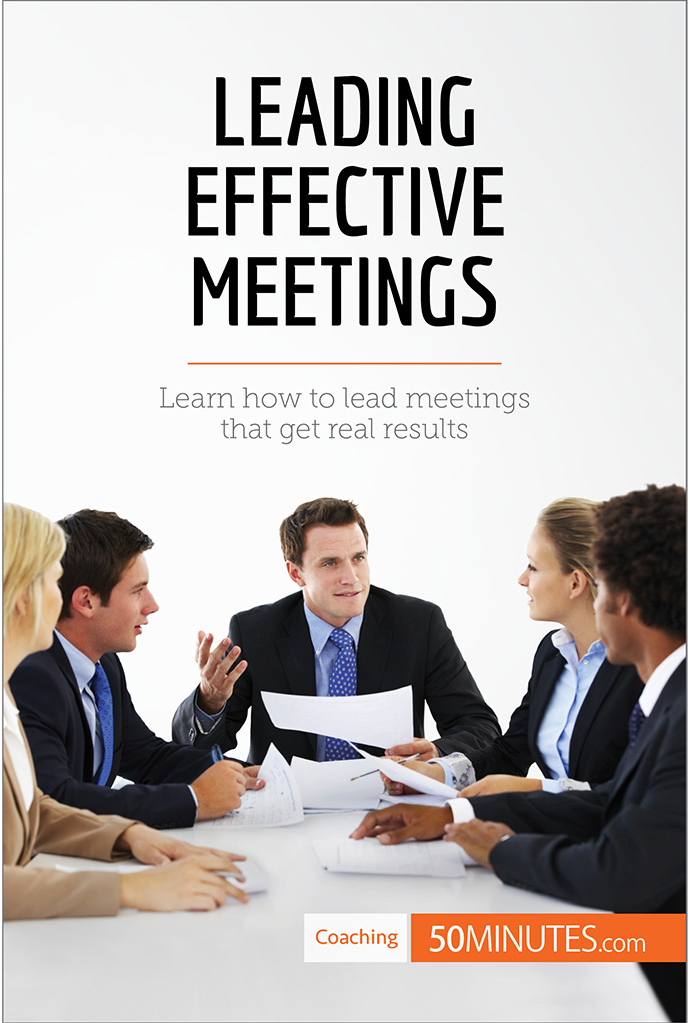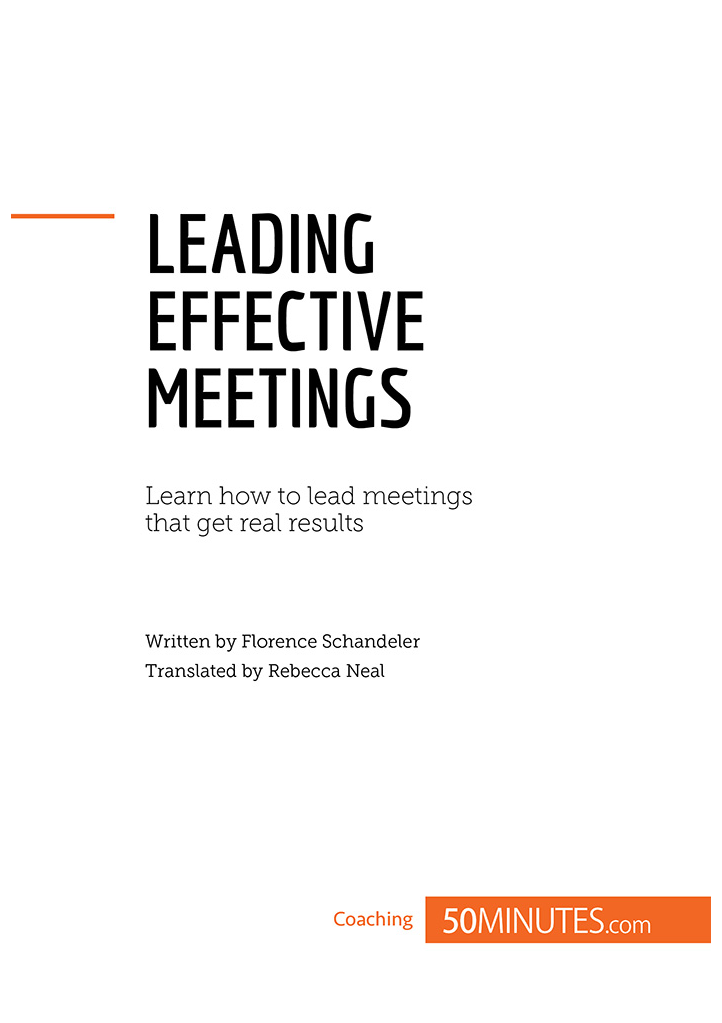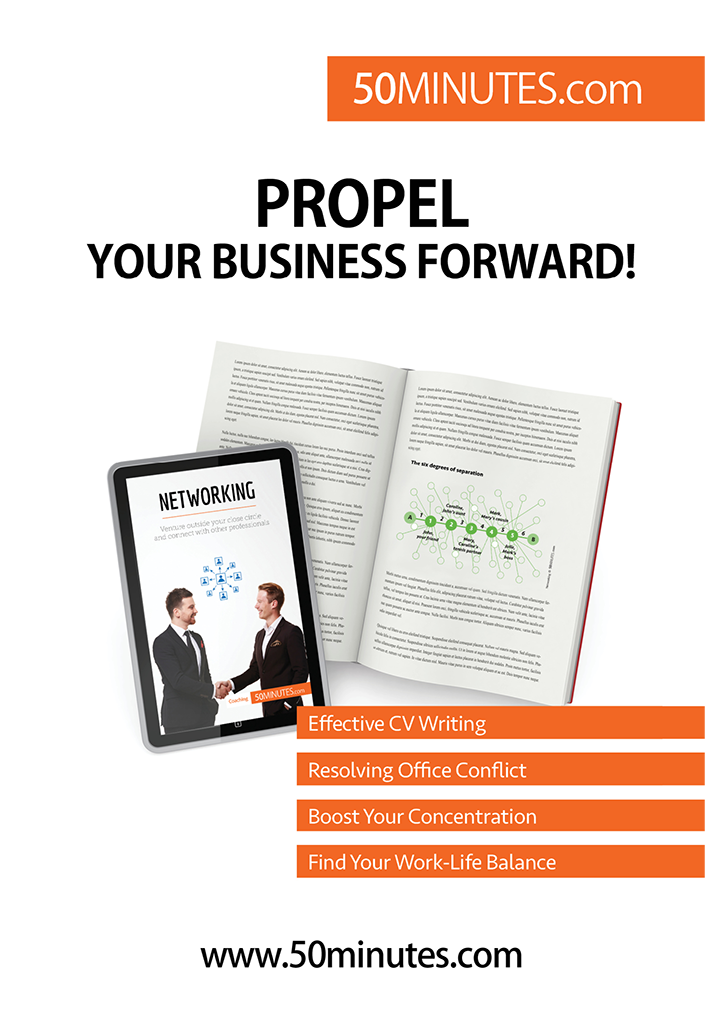Effective meetings
- Issue: how do I ensure that meetings are not a waste of time and that they lead to real decisions?
- Uses: in a professional setting, it is often necessary to hold a meeting to inform, consult or make decisions. It is therefore vital to go about this properly in order to obtain the desired results.
- FAQs:
- Do I really need to plan this meeting?
- What material should I organise?
- Who should I invite to my meeting? How many participants should there be?
- How should I deal with the time factor? How long should my meeting last?
- What can I do to make sure that everyone participates actively?
In the professional world, all workers are likely to have to lead a meeting at some point. The aim of this guide is to concisely and succinctly answer the questions that commonly arise in this situation.
Passing on information, delivering a training course, consulting partners, voting on changes within the company, etc.: there are plenty of reasons to exchange ideas and collaborate with your colleagues. Several solutions are possible: sending emails, speaking on the phone, talking with each of the people involved, or all getting together around a table to discuss an issue or set a common goal.
Meetings are often seen as the most efficient way of communicating in many cases, such as carrying out training within the company, making a decision or finding out the general opinion. However, because of the way that they bring different participants together, they can soon become time-consuming and turn into a simple discussion if they are not structured to ensure that the group makes progress.
As such, from the preparation to the summary of a meeting, it is essential to give the participants a general framework to make sure that the meeting is effective. This guide will tackle the three main parts of this: the preparation, the meeting itself, and the minutes. We will see how to draw up an agenda and clearly and concisely set out the aims to be achieved, how to best manage communication between participants, and how to follow up to ensure that the decisions made have an impact and to evaluate the actions carried out.
Leading a meeting: the basics
The three stages of an effective meeting
- preparing and setting objectives
- leading and acting (making decisions)
- ensuring follow-up and communicating the results.
Preparing for the meeting
Drawing up an agenda
To avoid simply planning a friendly meet-up between colleagues, it is vital that you prepare for the meeting seriously by drawing up an agenda and establishing the objectives to be reached.
The agenda is a plan for how the meeting is going to work which is sent to colleagues to notify them to attend, preferably in written form in order to avoid potential forgetting or misunderstandings and to provide a formal framework for the meeting. It is sent to all participants before the meeting, but it is best not to do this too early or it might be forgotten. It is generally advised to send it around four days before the date set so that everyone has time to take note of it.
This plan contains practical information: the date, the start and end time of the meeting, possible information on lunch and other breaks if necessary, the room and the list of people invited. It also includes the list of subjects to be discussed, so that the participants can think about them beforehand and come to the meeting fully informed, which will allow them to get more involved in the discussion.
Extra information
As far as possible, it is always preferable to involve the participants in the drawing up of an agenda, by finding out what their preferences are in terms of content and layout, so that they feel more responsible for the work undertaken.
Setting goals and motivating people
To make the work to be carried out as a group concrete and tangible, you need to formulate clear and precise objectives that all the participants must try to reach at the end of the meeting.
By definition, a goal needs to be:
- Achievable. You should take into account the means and resources that the group has at its disposal and the constraints it faces.
- Measurable. The results that you are trying to obtain must be assessable, and for this reason you must establish clear and precise criteria that will allow you to say whether the goal has been reached or not.
- Useful. For the group to rally around a given goal, they must be able to see what is at stake. A concrete and concise formulation of the objective must highlight the benefits of successfully completing the project.
- Appealing. The goal should create desire in participants so that they actively get together in order to carry it out. Indeed, while the presence of a goal which is seen as shared is an essential condition for a group to recognise itself as a group and decide to act together, it is necessary to keep in mind that this group is by nature comprised of different people who all have their own expectations and opinions. For the different participants to unite around this common goal, dedicating their time and energy and sometimes even sacrificing some personal ideas to it, each persons interests and aspirations must be taken into account.
- Determined by a time factor. It is vital to set a deadline for the carrying out of the task set, as without this it will be impossible to coordinate the activity of all the participants and to maintain the motivation of the group.
Do not try to do too much: it is better to try to reach a single concrete, realistic and measurable goal than to attempt to deal with all the themes directly and have no tangible results at the end of the meeting. Being able to objectively show the participants that progress has been made on the project and that they have not wasted their time with endless discussions is essential to preserve the confidence and motivation of the group.
Example objectives for a meeting
(Taken from the work of the diocesan service of secondary and further education advisors (SeDESS) in Namur-Luxembourg)
- Proofreading and editing internal rules;
- Developing an interdisciplinary learning project together;
- Jointly defining the role of the reference person for the individual learning plan;
- Defining the support procedure for struggling pupils;
- Informing about primary reforms.
The existence of a well-established structure which names the group leader or leaders is a necessary condition to ensure cohesion and give each of the participants the freedom to speak and act.
The person running the meeting is the one who takes on the role of leader within the group. They are not to be confused with a person of higher status (like a manager with their employees or a teacher with their students), but rather are granted by the group, in the precise spatiotemporal setting of the meeting, the necessary authority to successfully carry out the activities. They are at the service of the group to facilitate exchanges, clarify the objectives and encourage efficient working.

